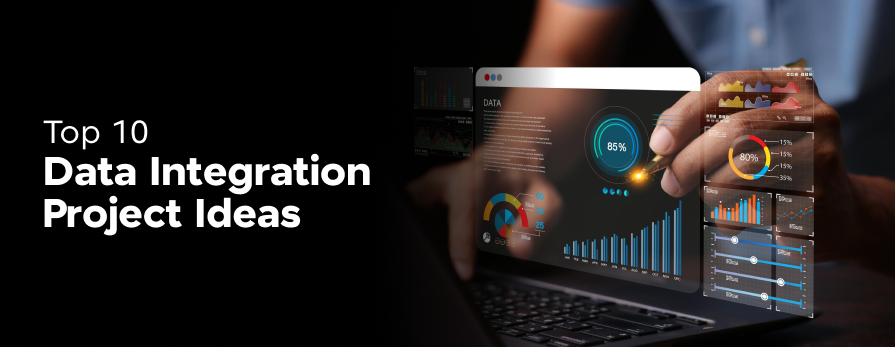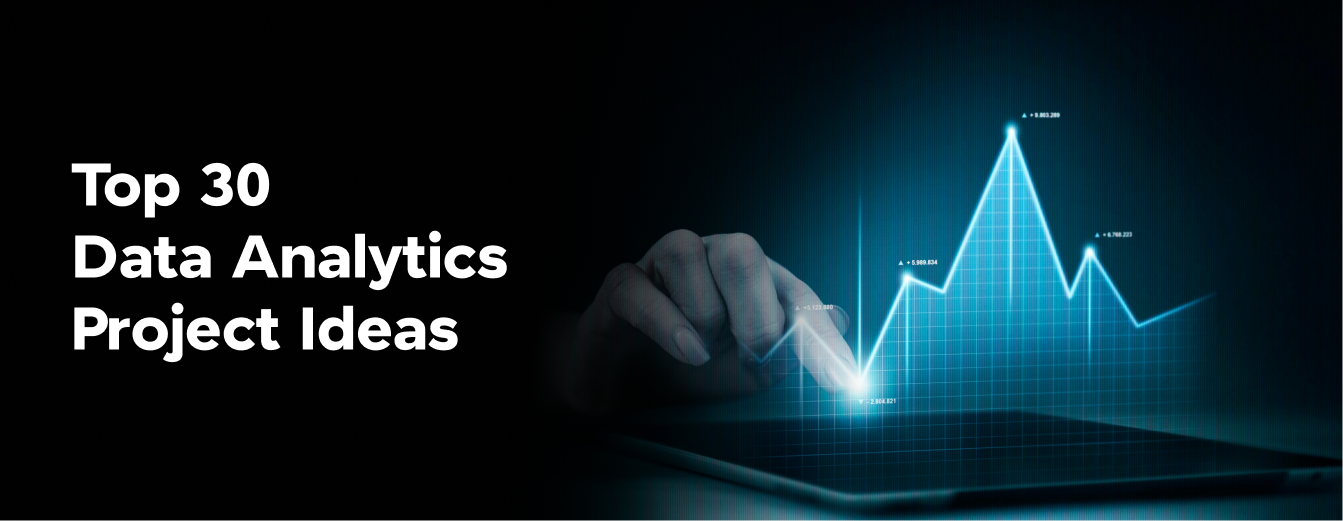
The Role of Data Analytics in Recruitment: 8 Key Factors to Succeed!
Mar 26, 2024 4 Min Read 1317 Views
(Last Updated)
With the rise in the number of candidates applying for job roles, it becomes difficult for HR professionals to hire the best one. There are several methods HRs follow for the recruitment process to select the top talents. One such method is data analytics in recruitment. Data analytics has helped them to optimize the hiring process and give better results within a short period.
In this blog, we’ll be reading about the key factors responsible for the recruitment process through data analytics. This blog is specially curated for HR professionals to help them take data insights and make effective decisions that can help organizations lead to successful hiring.
Table of contents
- The Role of Data Analytics in Recruitment
- 1) Understanding Recruitment Analytics
- 2) Predictive Analytics for Candidate Assessment
- 3) Examples of Recruitment Analytics
- 4) Benefits of Recruitment Analytics
- 5) Challenges and Solutions
- 6) Use AI-powered Candidate Matching
- 7) Course and Future Trends
- 8) Building a Data-Driven Recruitment Strategy
- Conclusion
- FAQs
- Q1: How can small and medium-sized enterprises (SMEs) benefit from recruitment analytics?
- Q2: Is there a specific skill set required for professionals entering the field of recruitment analytics?
- Q3. How does data analytics help in recruitment?
The Role of Data Analytics in Recruitment
Let’s look at the key pointers important for recruitment analytics:
Before we move to the next part, you should have a deeper knowledge of business analytics concepts. You can consider enrolling yourself in GUVI’s Business Analytics and Digital Marketing Career Program, which lets you gain practical experience by developing real-world projects and cover technologies including Power BI, Excel, SQL, Tableau, Data Visualization, etc. Additionally, if you would like to explore Marketing Research Techniques through a Self Paced course, try GUVI’s Marketing Research Techniques Self-Paced certification course.
1) Understanding Recruitment Analytics
Recruitment analytics is a systematic approach to optimize data for the hiring process. It involves using data to gain insights into talent acquisition, such as sourcing strategies and predicting future needs. This data-driven approach replaces traditional intuition-based decision-making, reducing time-to-hire and enhancing overall recruitment efficiency.
Data analytics transforms the recruitment paradigm by introducing a strategic, scientific approach. Metrics like time-to-fill, cost-per-hire, and quality-of-hire, along with Key Performance Indicators such as candidate satisfaction and retention, quantify recruitment success. Regular monitoring of these metrics allows organizations to refine strategies and make informed decisions, ensuring competitiveness in the dynamic talent landscape.
Read Also: How Post-Pandemic Era Reshaped Tech Recruitment
2) Predictive Analytics for Candidate Assessment
Predictive analysis is the process of using data to predict future outcomes by converting them into insightful data. It uses different technologies like AI, ML, and data analysis to create patterns that predict the behavior. Recruiters use previous history, to work on the strategy of recruitment.

It is the most common method recruiters follow to hire candidates with talent. Predictive analytics also helps in identifying potential candidates who may not have applied yet, expanding the pool of qualified talent. This forward-looking approach enhances the efficiency of talent acquisition, ensuring that organizations secure candidates who align with their long-term goals.
Find Out 6 Interviewing Techniques for Technical Skill Assessment
3) Examples of Recruitment Analytics
Let’s look at some of the examples of recruitment analytics:
1. Candidate Journey Analysis: An organization employs recruitment analytics to understand and enhance the candidate’s journey. Through data tracking, they capture information on candidate interactions at various touchpoints, such as the career site, application process, and interview stages. Analytics reveal insights into the drop-off points where candidates may abandon the application process.
The company improves the overall candidate experience by addressing these pain points, leading to a higher conversion rate and a more positive employer brand. This data-driven approach not only streamlines the recruitment process but also helps the organization make informed decisions to enhance its attractiveness to top talent.
Read More About Top 8 Strategies for Effective Tech Talent Sourcing
2. Employee Referral Program Analysis: An organization has an employee referral program in place to tap into its existing workforce for potential candidates. Recruitment analytics is utilized to evaluate the effectiveness of the referral program by tracking key metrics. This includes the number of referrals, the conversion rate from referral to hire, and the performance of candidates referred by employees.
By understanding which employees are most successful in referring quality candidates, the company can optimize its referral program, incentivize participation, and strengthen its internal talent pipeline, ultimately reducing recruitment costs and improving the quality of hires.
4) Benefits of Recruitment Analytics
There are various benefits of recruitment analytics which is why recruiters are shifting towards data analytics in recruitment:
- Increase the number of qualified candidates
- Increased diversity
- Efficient hiring process
- Reduce onboarding costs
- Improved ROI (recruitment metrics and helps recruiters to make informed decisions
Also Explore: 7 Unique Ways Companies Are Attracting Tech Talent in 2024
5) Challenges and Solutions
The challenges recruiters face while using data analytics in hiring are:
- The integration of diverse data sources
- Not easy to consolidate and analyze information cohesively
- Data accuracy is sometimes compromised
- Resistances organizations face while working on a data-driven approach
The solutions recruiters face while using data analytics in hiring are:
- To avoid such challenges, you can implement several strategies
- Using some premium tools to get accurate results
- Regular data auditing and cleansing processes
6) Use AI-powered Candidate Matching
All of us are so dependent on AI, that even while hiring candidates, AI-powered tools play a major role. These tools help the recruiters to find the best candidates for a job. According to a survey by Korn Ferry, it has observed that 76% of talent acquisition specialists are now more diverted toward data-driven results than in previous years.

AI tools use machine learning algorithms to analyze candidate data and match it to job requirements. It helps in the hiring process, reduces time-to-hire, and improves the quality of hiring. Some of the AI tools for data analytics in recruitment:
- HireVue
- Fetcher
- Ideal
- Entelo
- Textio
Also Explore: Top 13 Product-Based Companies for AI Freshers
7) Course and Future Trends
To have the skills required to become a data analytics professional, you must think about for registering a course. We, at GUVI, offer Business Analytics in Digital Marketing, including Live classes & recorded sessions, and cover the major factors important to becoming a business analyst and leading an organization successfully. Enroll in this course and get started with your journey by working on the projects and being placement prepared.
The future of data analytics in recruitment is promising and is helping organizations attract, assess, and retain talents. The increase in usage of AI & ML algorithms to analyze datasets accurately. This can help to filter resumes, predict candidate’s performance, and help in the screening process to reduce manual effort in the stages of recruitment.
Also Read: Data Science vs Data Analytics | Best Career Choice in 2024
8) Building a Data-Driven Recruitment Strategy
There is a strategy recruiters have to perform to build a data-driven recruitment process. It helps in continuous improvement and adaptability. Let’s look at some of the strategies to follow:
- Establishing a feedback loop that adds performance metrics that helps organizations identify areas for improvement and make data-driven adjustments to their recruitment processes.
- A survey has been sent to the managers to assess the newly hired candidate where managers can give feedback, based on which the underlying process may happen.
- To avoid multiple levels of meetings, recruiters track the metric to identify the ideal number of interviews to be taken for different levels of the company.
Ease your recruitment process with HYRENET, a hiring tool, specially designed for recruiters where you get AI proctoring, 15+ programming language support, complete reports and analysis of tests, and a lot more.
Kickstart your career by enrolling in GUVI’s Business Analytics and Digital Marketing Career Program where you will master technologies including Power BI, Excel, SQL, Tableau, and Data Visualization, and build interesting real-life business-analytics projects. Alternatively, if you want to explore Marketing Research Techniques through a Self Paced course, try GUVI’s Marketing Research Techniques Self Paced certification course.
Conclusion
The importance of data analytics in recruitment has played a major role in helping recruiters hire professionals having great skill sets and qualifications. This blog covers the major aspects you should know before performing predictive analysis in recruitment.
With these steps and pointers, HRs can optimize their talent acquisition processes and hire top talent. You must follow the latest advancements and best practices in the field of data analytics in recruitment to make informed decisions.
Also Explore: Business Analytics vs Data Analytics: Which is More Important in 2024?
FAQs
Q1: How can small and medium-sized enterprises (SMEs) benefit from recruitment analytics?
Ans. To benefit from recruitment analysis, businesses/companies convert the collected data into actionable insights. This in return helps them to make more effective decisions in terms of hiring/recruiting.
Q2: Is there a specific skill set required for professionals entering the field of recruitment analytics?
Ans. These are the skillsets you need to have in the field of data analytics in recruitment:
Communication
Confidence
A positive body language
Networking and relationship-building
Awareness of current trends and technology
Q3. How does data analytics help in recruitment?
Ans. Predictive data analytics in recruitment is one way that helps recruiters to make informed decisions. It uses previous data to predict the likelihood of future outcomes.




































Did you enjoy this article?